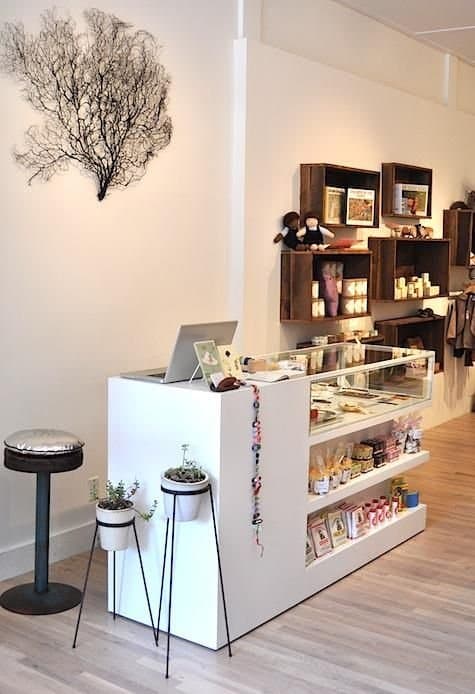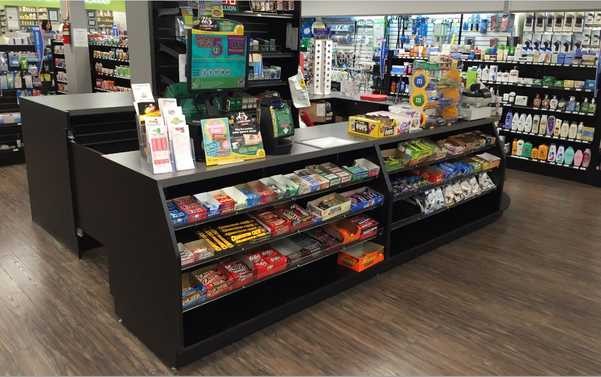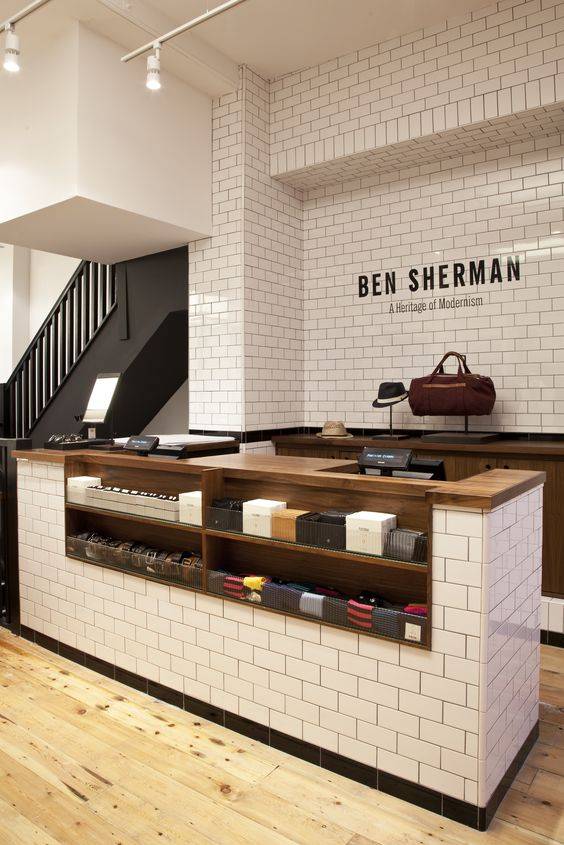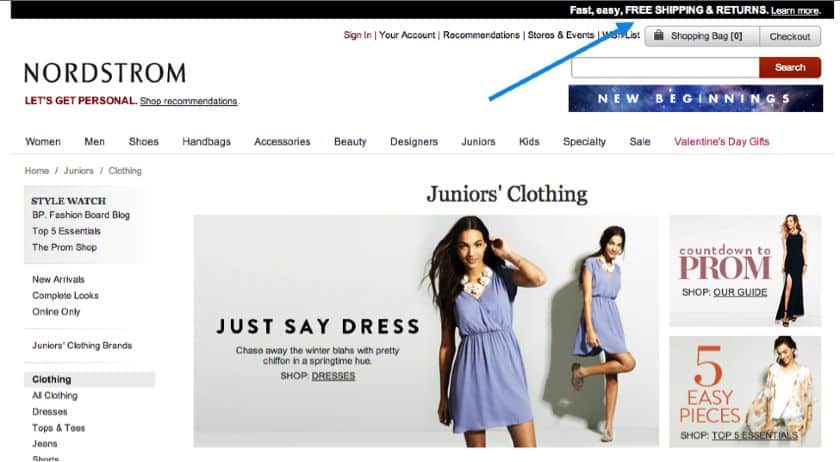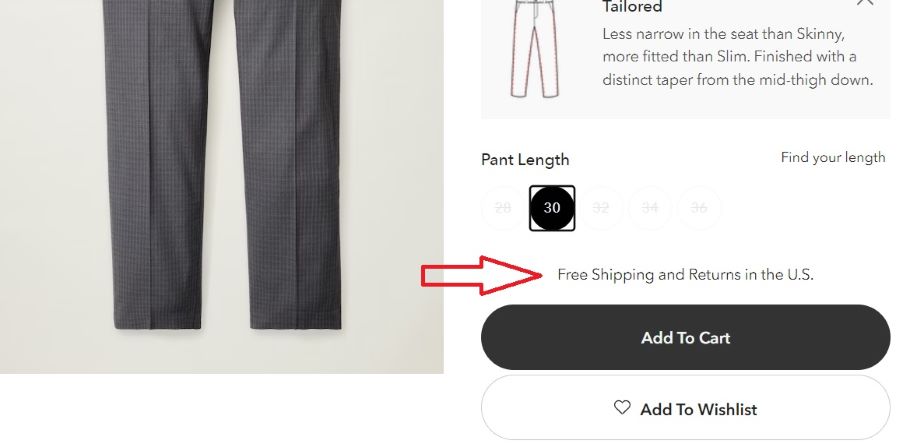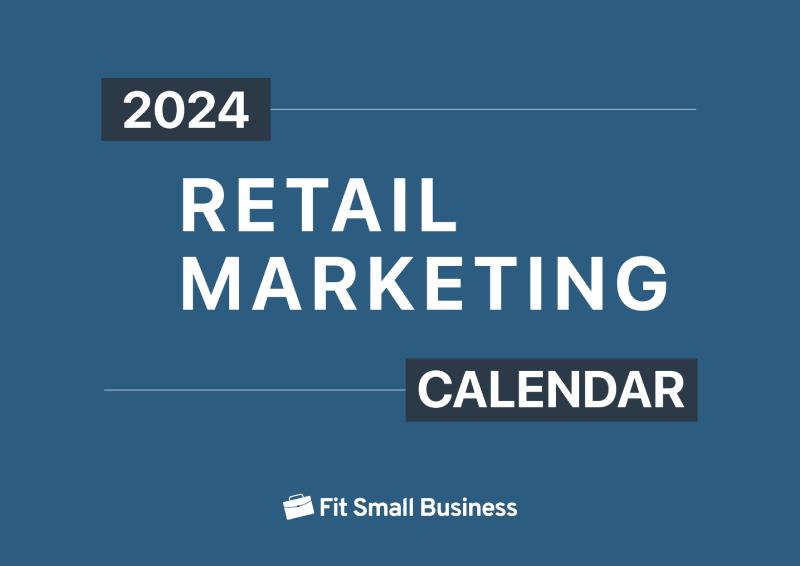Point-of-sale (POS) marketing is the merchandising and promotional efforts that take place around the register or online checkout pages.
16 Effective POS Marketing Ideas for Driving Sales
This article is part of a larger series on POS Systems.
When done effectively, POS marketing can help boost your business’s upselling and cross-selling potential, reinforce your brand, improve customer experiences, and enhance your store’s visual appeal. Here are 16 in-store and online point-of-sale marketing ideas to drive sales.
Ideas for Your Brick-and-Mortar Store
1. Line Your Checkout Space with Displays
Place shelves or free-standing displays around your register to showcase small, inexpensive products. This will keep your customers shopping while waiting in line and promote impulse buys.
Impulse buys: An unplanned purchase. When a customer buys items they were not planning on buying, or when something is bought “on a whim.”
Impulse buys can be a great way to drive sales, especially in today’s climate. As of 2022, the average person spends $314 per month on impulse purchases—up from $276 in 2021 and $183 in 2020. Plus, a recent poll found that 64% of American adults have increased their impulse shopping habits in the last year.
When stocking your shelves with impulse items, use products like snacks, small accessories, or other little items that customers can add to their purchase without much thought. Another strategy is to display odds and ends that customers might have forgotten—like batteries, lighters, and nail clippers.
For example, at my clothing boutique, we had fashion tape, static guard, and small accessories around our register. Nearly every customer would add a roll of tape or fun ring to their initial purchases—products they may have forgotten or never considered had the items not been marketed around our POS system.
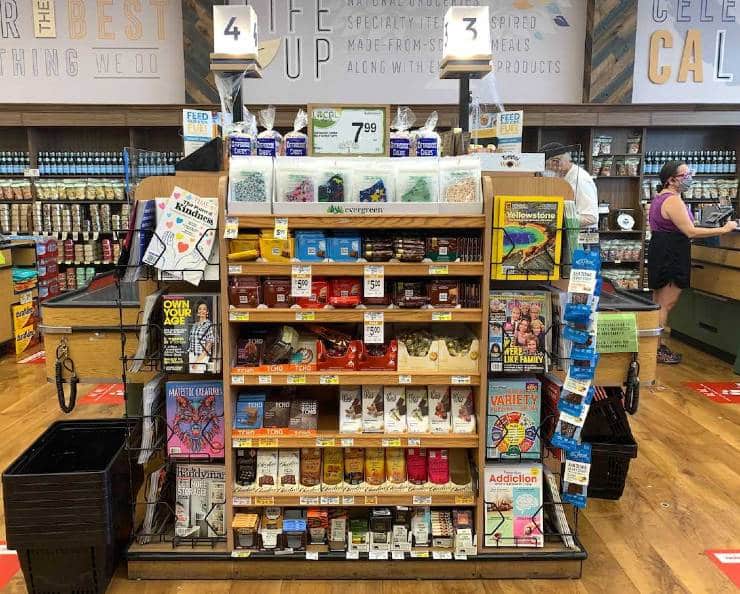
Adding small, inexpensive items to your POS area is a great way to inspire impulse purchases. (Source: BerkeleySide)
2. Add Countertop Displays
In addition to your checkout area, you can incorporate displays and capitalize on impulse buys on your actual checkout counter.
Create small displays like the ones below, which showcase items that customers can easily add to their purchase or small products that they may have forgotten to shop for.
The countertop POS marketing strategy is especially useful if you don’t have a lot of space around your cash wrap for shelving displays. Displaying products on your counter is a great way to utilize product space without taking up additional square footage.
3. Use Guiding Signage
Guiding signage is another way to enhance your countertop displays. Spark inspiration in your customers with signs telling them how to use your product or what it is best suited for. If customers are able to envision how they would use your products, they will feel more subliminal pressure to make an impulse purchase.
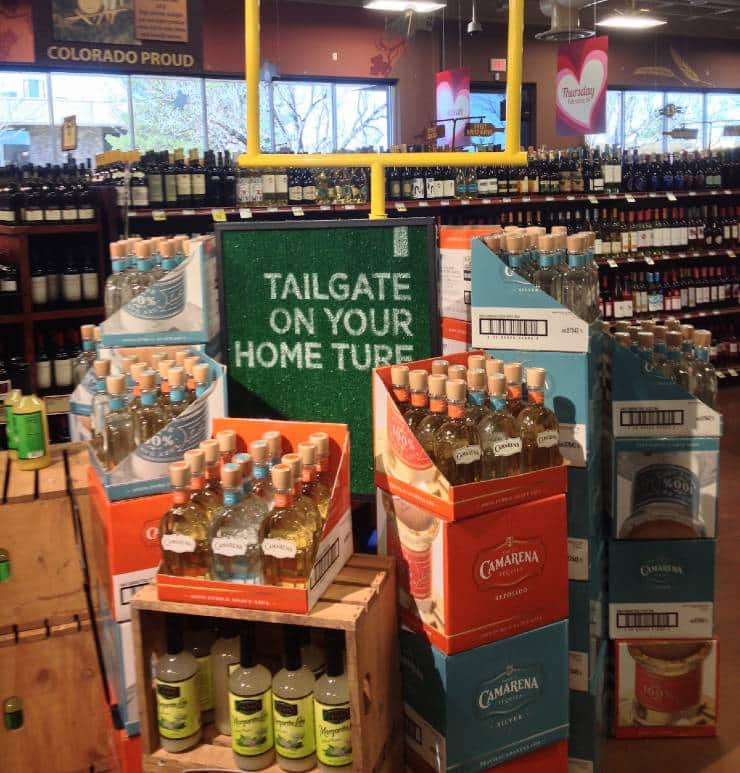
Guiding signage that describes how an item may fit into the customer’s life is a fantastic way to inspire impulse purchases at your register. (Source: Pinterest)
4. Create a Sampling Area
Another way to boost customer engagement and drive sales around your POS is by creating a sampling or demo station. Whether sampling a new snack or showing shoppers how to use a featured product, a sampling area is a great way to introduce customers to new products and boost sales.
You can either create your own samples and station or contact your supplier for sample inventory and displays. Most of the time, suppliers don’t mind sending them out for free, and they will often include a temporary sampling station for you to use. Otherwise, a small folding table with some signage should do the trick.
Set up your sampling in an area closest to the checkout counter, but be sure that it doesn’t get overcrowded or disrupt the queue. This will allow you to capitalize on customers about to make a purchase, drive impulse buys, and maintain order in your checkout area.
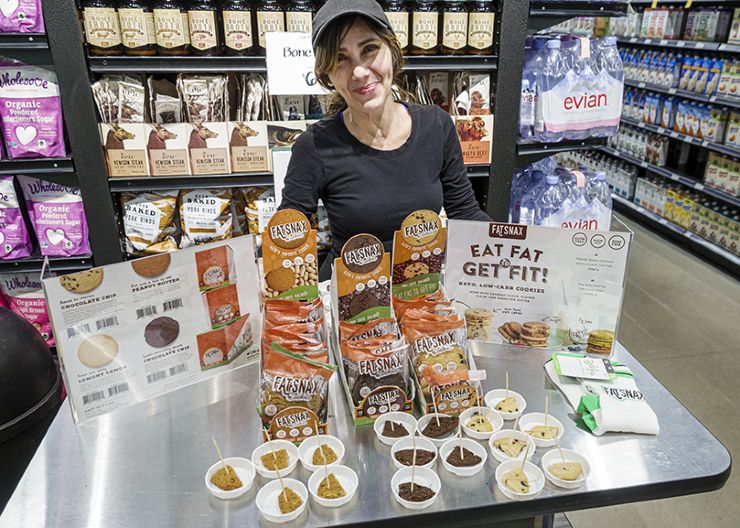
Create a sampling station near your POS to boost sales and introduce customers to new products. (Source: PR Week)
5. Set Up ‘Dump Bins’
Dump bins are floor-standing open containers that hold loose products, like boxed candy or school supplies. Dump bins typically hold products that are categorically the same and are on sale or discount.
You’ve likely seen the large wire bins of old $6.99 DVDs at your local supercenter. Those bins are dump bins, a POS marketing strategy to promote impulse purchases and move clearance products.
If you have large numbers of low-cost clearance items, consider displaying them in a dump bin near your register. Use signage to draw attention to their price and make them accessible from all sides. This will keep customers shopping as they wait in line and promote impulsive, discount-motivated purchases.
Did you know?
76%–89% of US shoppers would be willing to try a new product or brand if offered a discount or sale price.
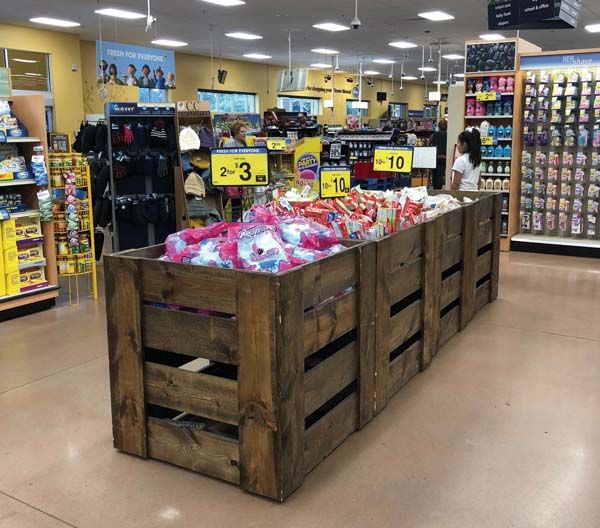
A dump bin holds discounted products near the checkout area. (Source: Creative Magazine)
6. Display a QR Code at Checkout
The checkout line is a great place to use QR codes to engage customers with your brand and keep people shopping as they wait in line. With a QR code, shoppers can use their phones to scan and go directly to your website, social media pages, a survey, or even to make payments—it’s up to you and what you want to show them.
Customers in line to check out have already connected with your brand, so if you offer them more opportunities to engage, they’re likely to partake. Place QR codes around your register to boost engagement, promote online sales, and create an exciting and engaging customer experience.
Want to learn more about how you can use QR codes for payments? Check out our guide on QR Code Payments.
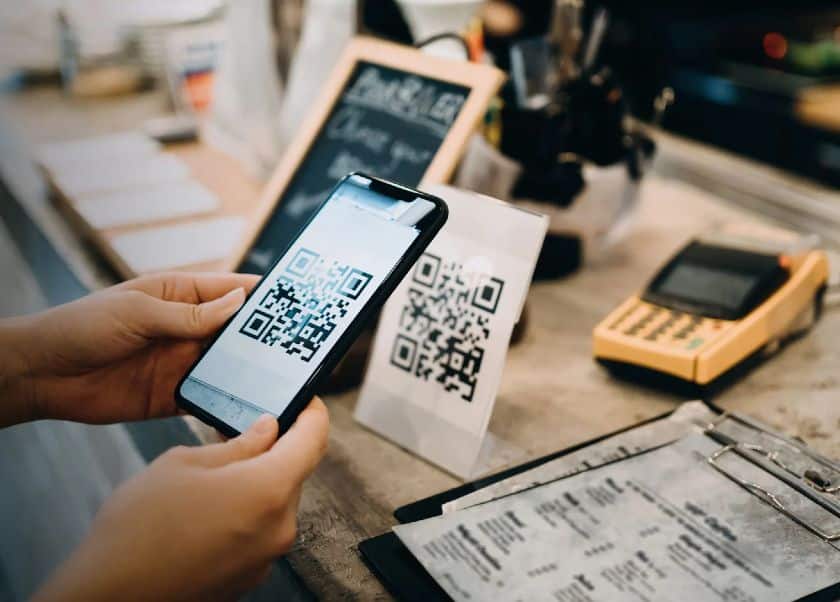
QR codes can boost engagement, enhance convenience, and help keep customers happy. (Source: National Retail Association)
7. Make Customer Service Available at Checkout
Be sure that your customers can get assistance at or near your checkout counter. This placement of your customer service area is not only logical to shoppers but will help ensure that customers are able to end their shopping trip with a positive experience.
Place flyers or displays with common customer questions around your POS. Include things like your return policy, parking information, and current promotions—anything you think your customers might need or want to know.
Depending on how much space you have, your customer service desk will either be part of your POS station or located at a separate desk. Equip your service area with a handbook of company policies, its own POS kiosk (for looking up orders and processing returns and refunds), and any supplies your associates might need to help customers with returns, exchanges, or other product issues.
For example, the customer service area at my boutique was located at our POS. So we had a sewing kit, static guard, tide sticks, and pantyhose for shoppers to use to try on clothes. We also had tissues, paper, ribbons for wrapping, and office supplies for any paperwork or shipping information.
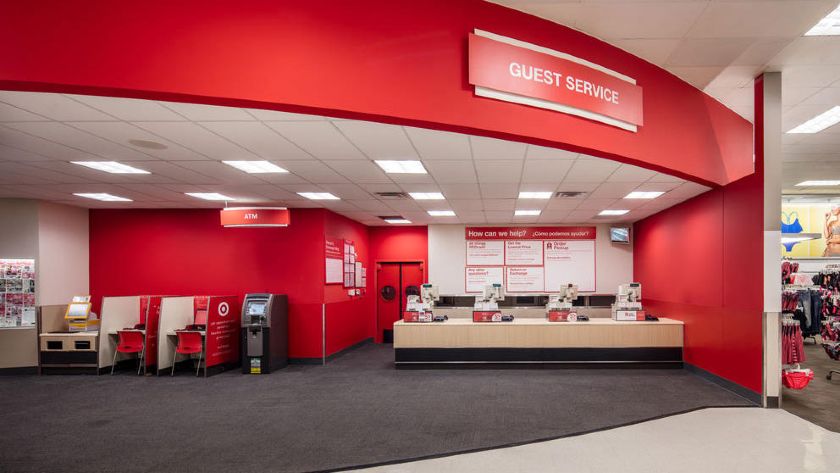
Provide customer service at or near your POS to ensure a smooth shopping experience. (Source: Supermarket News)
8. Incorporate Self-service Kiosks
Another point-of-sale marketing idea is to incorporate a self-service checkout kiosk into your store. Self-service kiosks are devices that include a digital screen, barcode scanner, and bagging area that customers can use to check themselves out and complete their purchases. They’re common at local grocery stores, as pictured below.
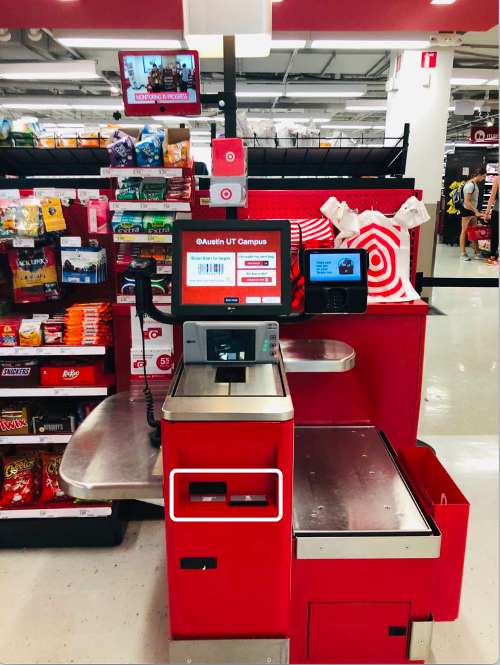
Self-checkout kiosks have a digital screen, scanner, and bagging area for shoppers to use to complete their purchases. (Source: Medium)
Self-service checkouts will minimize labor costs, add a high-tech flare to your store, and help keep lines at bay—improving your customers’ overall experience. They have also been shown to yield higher ticket values, boosting sales. The majority of customers even prefer self-service kiosks for their convenience.
Check out our article on all things kiosks to learn more about kiosks and the different types you can add to your store.
Ideas for Your Online Store
9. Entice Online Shoppers With Free Shipping
POS marketing is not just for brick-and-mortar stores; it’s also an important part of creating an effective online presence. When it comes to ecommerce sites, POS marketing refers to all the design and marketing efforts that take place around the shopping cart and checkout pages.
Just like in physical stores, effective ecommerce POS marketing can help you drive impulse sales, upsell, and make shopping easier for your customers.
Did you know?
A study from Deloitte found that 85% of consumers prefer free shipping to fast shipping, and 88% are not willing to pay extra for standard shipping.
Your shipping prices are a huge factor in customers’ decisions to make a purchase or not. In fact, in both 2021 and 2022, Jungle Scout found that shipping prices are more influential than product prices when it comes to making purchasing decisions.
You can set yourself apart and make people more likely to purchase if you offer free shipping. The biggest consideration here is how much your business can spend on shipping costs. There are several ways you can offer free shipping without sacrificing your bottom line.
- Minimum purchase: Offer free shipping once a customer reaches a certain cart value.
- Factor shipping cost into price: Bump up your prices slightly to account for incorporated shipping costs.
- Limited time: Offer limited-time shipping promotions to incentivize shopping during slow seasons or to stay competitive during peak seasons.
- Coupons: Offer to exchange contact info for your mailing list in exchange for free shipping codes.
- Membership: Make free shipping available to customers who have a membership or pay a flat annual shipping fee.
Want to learn how you can offer free shipping on your online orders? Check out our free shipping guide for instructions.
One of the best places to advertise your shipping deals is around your POS. Flash your shipping offers around the shopping cart icon, when customers add items to their cart, when they are in their carts, and again when they are inputting their information. This will ensure that customers know your offerings and benefits when they’re making their purchasing decision.
10. Show Recently Viewed Items
Another POS marketing technique is to remind shoppers of what they have already viewed. Displaying things they have previously shown interest in is a great way to bring those products back to the top of their minds and drive the purchase decision—sometimes, a second reminder is all you need. It also helps shoppers navigate your site and rediscover their favorite products.
Try incorporating a “Recently Viewed Items” section at the bottom of your shopping cart page. You may also want to consider using a “Quick Add” button on these products so that customers can simply click it without leaving their carts.
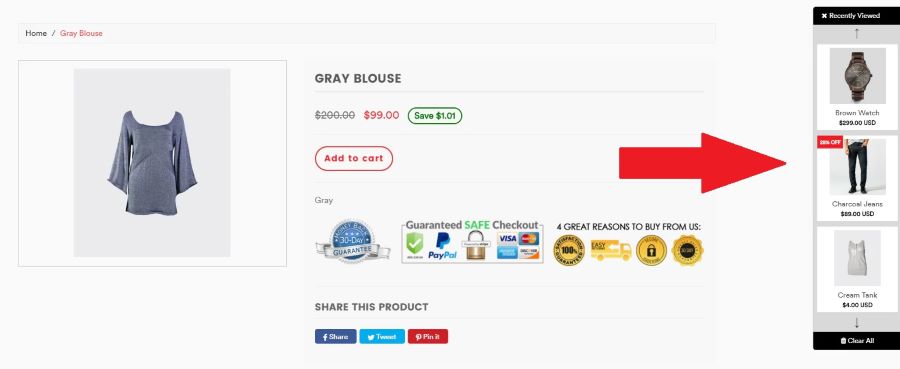
Display recently viewed items to remind customers of what they have already shown interest in. (Source: Shopify App Store)
11. Send Abandoned Cart Recovery Emails
On average, 71% of online shopping carts are abandoned. One of the most effective shopping cart recovery methods is sending emails to remind customers when they’ve left behind.
Using your website builder or a third-party software like Wunderkind, you can track which customers are abandoning their cart and send them reminder emails. I suggest sending these emails out between 24–48 hours from the time of abandonment. This way, you’re catching shoppers when the cart is still fresh in their minds, but not too close to the time of abandonment.
Keep your recovery email short and simple—you’re just sending them a simple reminder. What is really going to inspire a purchase is not the message but seeing the product they almost bought. Show pictures of what they left behind, and consider sweetening the deal with a discount or shipping offer.
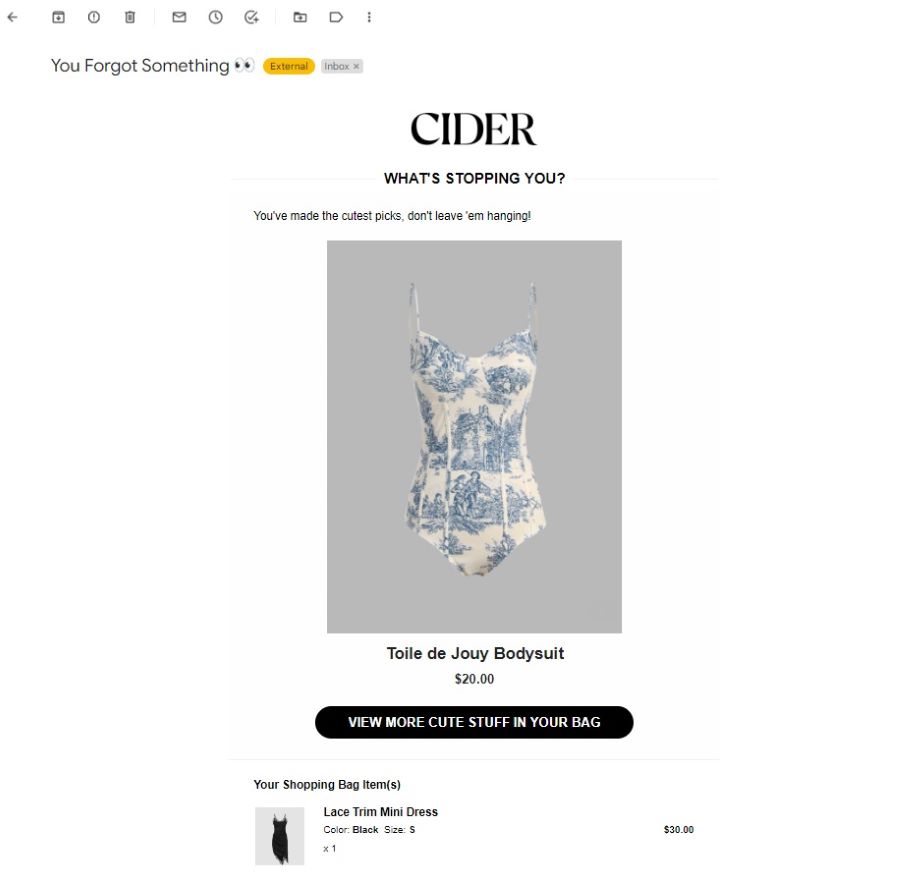
Use abandoned cart recovery emails to remind customers of their past products and drive your sales.
Ideas for Both
12. Campaign for a Cause
Another way that you can craft your customers’ experience and enhance your POS marketing is by making community partnerships and advertising them on the POS page or counter. This will let customers know what your business stands for and how they can become involved—and even help to boost your sales.
Did you know? According to a 2022 study from Google, a staggering 82% of shoppers prefer buying from businesses that align with their values and seek out these brands.
Contact local nonprofit organizations, look to community Facebook pages, and talk to your community center to learn where you can get involved. The cause you choose, however, will attract a certain customer—so be sure to choose groups and causes that align with your brand and how you want to represent your business.

For an effective POS marketing tactic, show customers how you are getting involved for a cause. (Source: Glassdoor)
13. Advertise Your Loyalty Program
At the checkout phase, customers have already connected with your brand and are ripe for becoming a loyal customer. This makes it the perfect time to let them know about your rewards, VIP, or loyalty programs.
Advertise your loyalty program in your POS area to catch customers when they are most engaged with your brand and help turn them into loyal shoppers.
Did you know?
A commonly cited retail stat notes there is a 60%–70% probability of selling to existing consumers compared to a low 5%–20% probability of selling a product to new customers.
In addition to creating more loyal customers for future purchases, offering a sign-up deal on your loyalty program at the POS will incentivize shoppers to go through with their purchase (or even buy more).
For example, a customer may be about to buy a candle from your site, and then a 15% off loyalty member signup coupon pops up at checkout. The customer would not only be more likely to buy the candle, but would also be incentivized to make a larger purchase at that moment to maximize the coupon.
I suggest having a sign-up opportunity on your shopping cart and checkout pages. It also helps to prompt customers to join again on the order confirmation page. These three spots should make it easy for customers to find signup opportunities at any time, and remind them of the opportunity again right before they leave your site.
Want to learn more about loyalty programs? Check out our articles on the top loyalty program software and loyalty program strategies.
14. Suggest Complementary Products
When customers are in the checkout phase, use POS marketing to cross merchandise complementary products. Cross merchandising can save customers time, make their shopping experience easier and more convenient, remind them of need, spark ideas, and drive your sales.
Cross merchandising: The practice of displaying items from different product categories together to incentivize customers to make multiple item purchases.
You can learn more about cross merchandising strategies with our cross merchandising guide.
Brick-and-mortar stores can cross merchandise by arranging like-items together on an aisle endcap or a special display. For example, a grocery store might place pasta and pasta sauce at an endcap by the register so customers can easily add both products to their cart at the end of their shopping trip. Or, a boutique might display scarves and hats near its POS so customers can grab all their cold-weather essentials in one place.
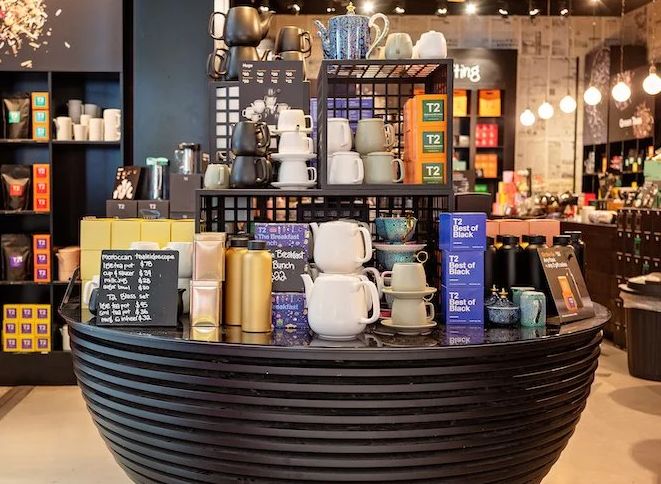
This retailer cross merchandised everything a customer could need to make a great pot of tea.
(Source: The Motley Fool)
Ecommerce stores can replicate this marketing effort online by incorporating product suggestions at checkout based on what shoppers are viewing or have added to their carts.
For example, if a customer has a pair of denim shorts in their cart, you might suggest matching tops and shoes that could make the item a complete outfit. Product suggestions are a great upselling strategy that make shopping easier for customers.
Did you know?
According to Salesforce, ecommerce retailers that use product recommendations see an average of 26% higher average order values.
Using a product recommendation software like Vue.ai, you can show product recommendations when shoppers are checking out so that they see everything they might be interested in before they make their final purchase. Be sure to flash options for similar products and complementary items and products from the same brand.
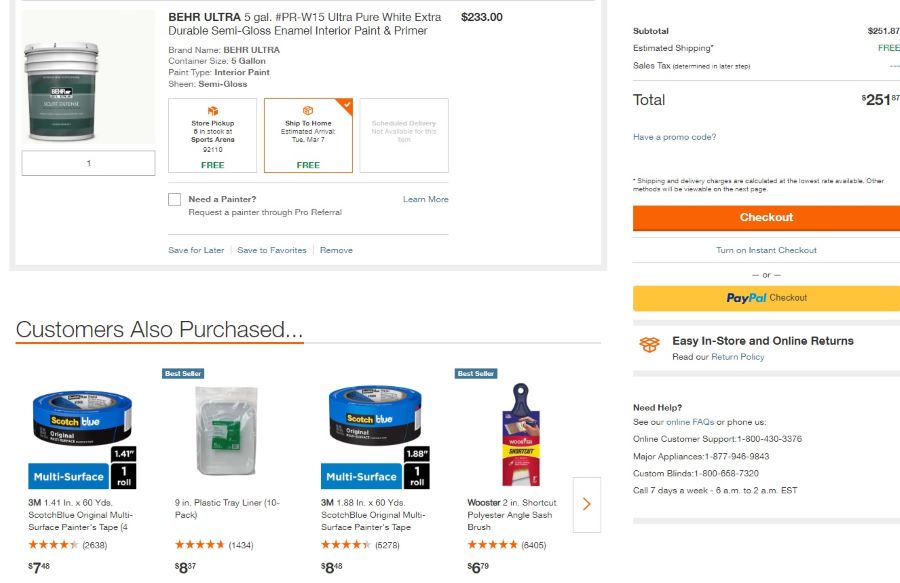
The Home Depot site features helpful product recommendations that appear when shoppers add an item to their cart, as well as when they go to checkout.
15. Use Compelling Calls to Action
Use call to action signage around the products at your POS to make shoppers more likely to buy. Or, for online stores, use eye-catching banners and graphics with compelling copy. For example, “try me,” “buy now,” or “check me out” verbiage draws customers in and gives them the necessary nudge to drive impulse purchases.
Call to Action (CTA): A marketing term for any display that is designed to prompt an immediate response or a sale.
Keep your CTA simple and straight to the point, but make it bold and attention-grabbing as well. The message should be short and sweet, starting with a strong verb like “buy” or “try” to incite action.
Then incorporate other words like “yours,” “now,” and “discount” to make your CTA compelling and eye-catching. In terms of design, use bold fonts and colors to make sure your signage stands out, and position it at eye level to ensure maximum visibility.
Did you know?
Personalized CTAs have a conversion rate over 200% greater than nonpersonalized ones. Do your best to address your shoppers directly with your CTAs, and use familiar, branded language.
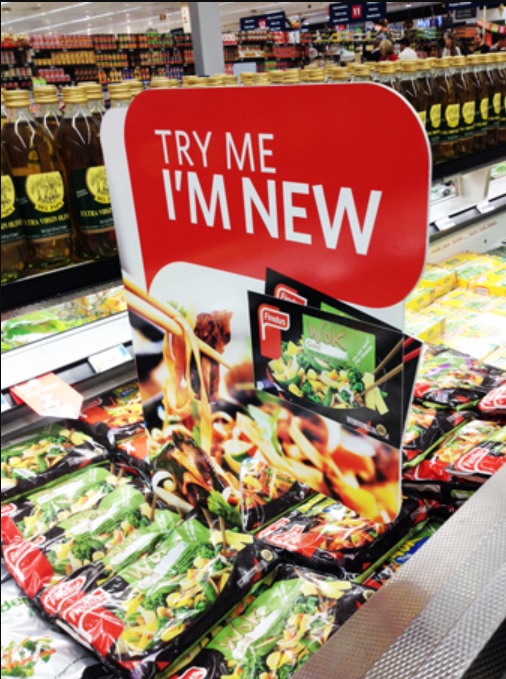
This sign is calling for people to “Try Me,” encouraging them to give this new product a go. (Source: Stikka Signs and Graphics)
16. Advertise Your Social Media Pages
Another POS marketing technique that you can use is advertising your social media pages near or on your checkout counter with posters, QR codes, and flyers. Or, for your online store, use links and helpful UGC (user-generated content) near the checkout page.
As mentioned above, shoppers going through your checkout process have already connected with your brand, making it the perfect time to deepen the connection by providing a new outlet for engagement.
Use strong, action-oriented language on your social media signage, and do what you can to make it easy for customers to find and follow you. You don’t want to create too many barriers, as this will deter them. You can even sweeten the deal by offering a promotion for following your brand on socials, like 15% off a purchase for each new platform they follow.
For example, at my store, we had posters with all of our social media handles listed boldly. The poster asked customers, “Have you followed us on social media yet?,” a presumptive question aimed at inspiring action. We also had QR codes for each social media page so that shoppers wouldn’t have to take too many steps to find us and give us a follow. We also noted that we ran social media-exclusive promotions to create an even greater incentive.
Bottom Line
POS marketing is a great way to boost your revenue, strengthen your brand, and drive impulse buys right before purchase.
Both in-store and online, POS marketing is vital to the success of your business and keeping your customers happy. Use the tips above to create an effective POS marketing campaign and watch your business grow.

